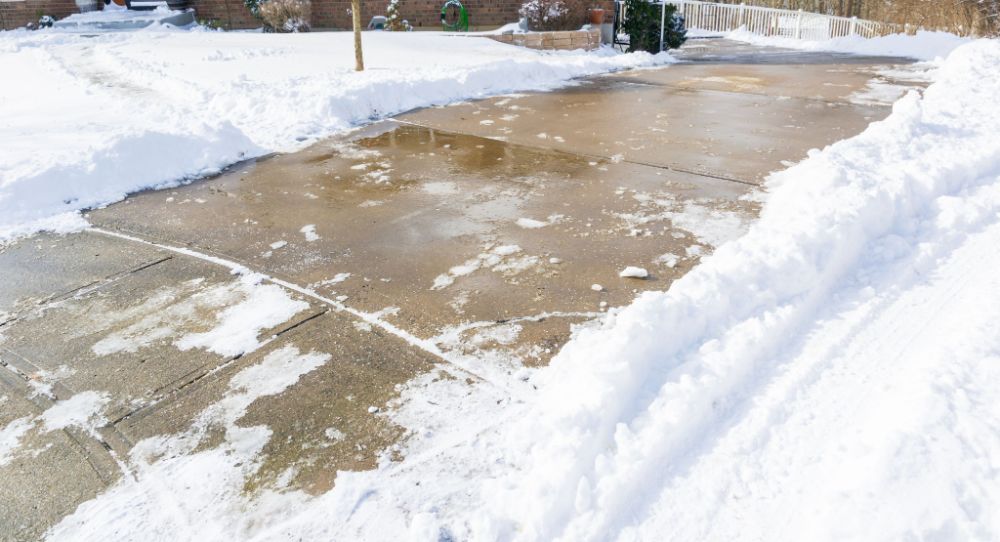When winter rolls around it's common for stores to quickly sell out of rock salt or ice melt products and if you're caught off guard this can leave you without any way to melt the ice on your driveway or walkways.
Also salt can damage concrete, plants and even pets so you may want to consider other alternatives to salt for melting ice and the good news is there are lots of different alternatives out there.
Regardless of whether you’re seeking a greener way to melt your driveway or just need a “whatever works that’s in my house” solution, we’ve got you covered.
We’ve put together 8 alternatives to melting ice without using salt. Also, at the end, we’ve added a simple and fun at-home science experiment that parents and caregivers can do with kids.
#1: Rubbing Alcohol & Dish Soap: Salt-Free Ice Melting
This little recipe does require hot water, but it works better than using hot water alone. It will also work if you use room temperature water, but you’ll probably require a lot more solution and it'll take longer to be effective.
Regardless of which you use, it will work best to first sweep or shovel (especially one with an aluminum edge strip) away the top snow and ice.
This will ensure that the solution gets to the bottom layer of ice, not just melting the easy fluff.
Rubbing Alcohol & Dish Soap Deicing Recipe
Combine in a bucket:
- Six drops of dish soap
- ¼ cup of rubbing alcohol
- Half-gallon of hot water
The most crucial ingredient in this recipe is rubbing alcohol which has a lower freezing temperature than water.
Combined this works really well to both melt existing ice on your driveway or path as well as prevent further ice buildup.
#2: Vinegar Spray
Vinegar is, at its essence, an acetic acid. When it is poured over ice, it lowers the melting point. Usually, this is done in solutions such as:
- One part vinegar, one part water
- 3 parts vinegar, one part water
This isn’t the quickest method and vinegar doesn't work very well for deicing driveways however it can be perfect for deicing your windscreen in the morning when you need to drive.
Because the vinegar won't freeze as early as ice this is something you can leave in a spray bottle in your car and have access to whenever you need it.
If you live in a super cold area you can use these methods to stop water (or other liquids) freezing in your car.
#3: Magnesium Chloride
Magnesium Chloride is a popular alternative to salt due to the fact that it's considered safer for plants and pets.
It's a bit more expensive than rock salt but it'll work in temperatures as low as 5ºF (-15ºC) to melt the ice on your driveways and paths.
It's also considered to be safer to use on concrete when compared to rock salt.
See the latest price of magnesium chloride at Amazon
#4: Calcium Chloride
Calcium Chloride usually comes in pellets and it's actually more effective than salt and works in lower temperatures.
Calcium Chloride works in temperatures down to -25ºF (-31ºC) and it's faster acting than salt too. Working nearly twice as fast in many situations.
It's more expensive but you may not need as much as rock salt and if you're not using a lot per year it can be worth the cost.
See the latest price of Calcium Chloride at Amazon
#5: Baking Soda
Baking soda is sodium bicarbonate. Thus, it is technically salt.
However, this alkaline is a bit nicer on concrete and even your grass than regular rock salt. To work, sprinkle it in generous proportions across the surface you wish to deice, then wait.
#6: Sugar Beet Juice & Pickle Brine
So this method might get the cops called on ya for murder. But aside from the bloody red stain, it works pretty well. You mix 20 percent beet juice with 80 percent pickle brine. Yes, there is salt in brine, but this is less damaging than regular rock salt.
Some folks just use sugar beet juice on its own with success. However, it will take much longer to work so this isn't going to be suitable in colder climates.
Also, the red hue of your driveway will be pretty startling to your neighbors.
#7: Sugar
If you want to avoid using salt due to the fact it can damage your plants, concrete or cause issues for your pets then sugar is a good alternative.
It doesn't work as effectively as salt does but it still works and in the below video you can see just how effective it was at melting the ice on someone's front steps.
#7: Break It Up, Scrape It Away
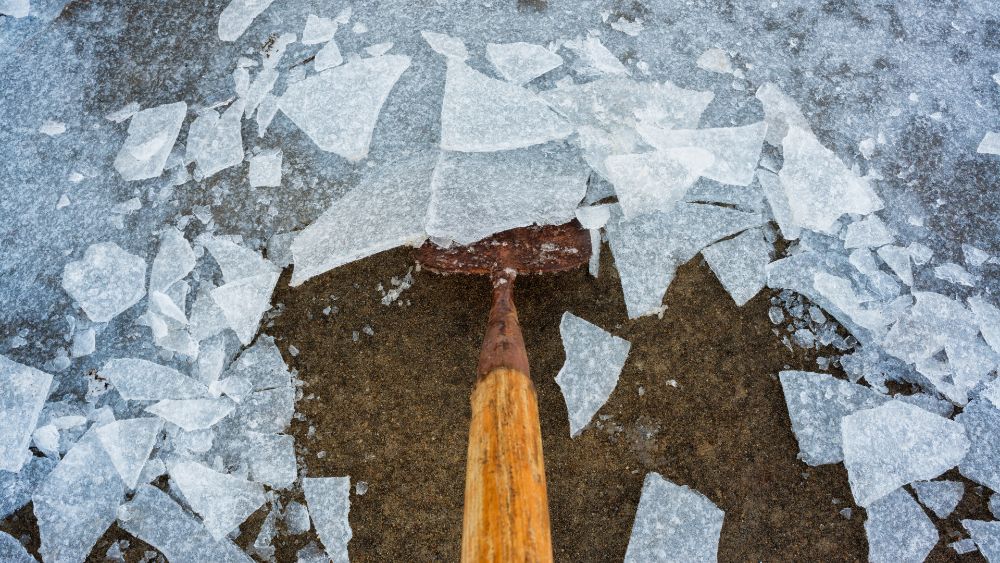
Sometimes the best solutions are the most basic solutions. Yes it takes a bit of work to break up the ice and scrape it away but honestly it can be one of the best options.
You don't have to worry about chemicals ruining your concrete or your plants or maybe even making your pets sick and best of all…it works.
So grab your shovel and get out there to break up the ice and scrape it off your driveway or path.
#8: Heat
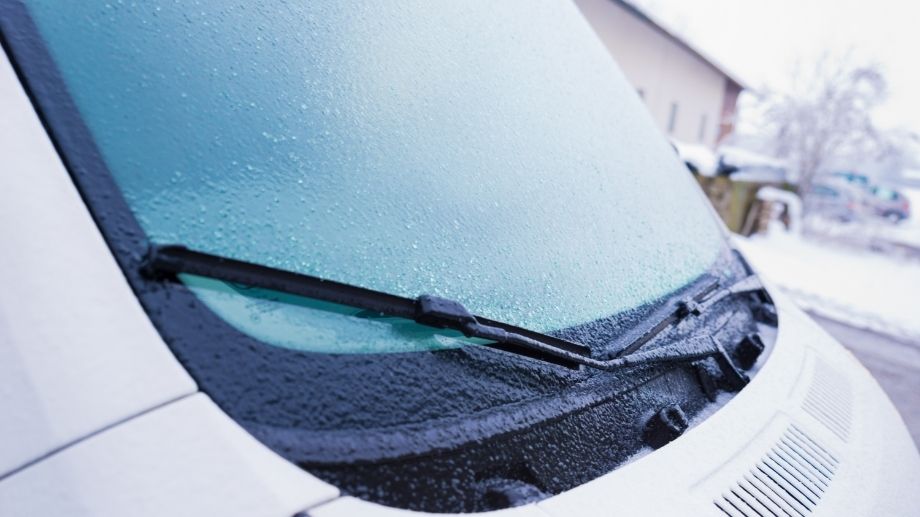
If it's ice on your windscreen that you're dealing with then adding heat to the windscreen will melt the ice on the letting drip away or making it easier for you to scrape it away.
It may take some time for your car to warm up and for the heater to begin working and melting the ice. This can use a lot of gas making it not the most cost effective method.
But you can also add heat in the form of hot water however you do need to be careful when doing this. The quick change from freezing cold to boiling hot does have the potential to break the glass on your car so the slow heat of the car heater tends to be the preferred method for most people.
#9: Heated Mats
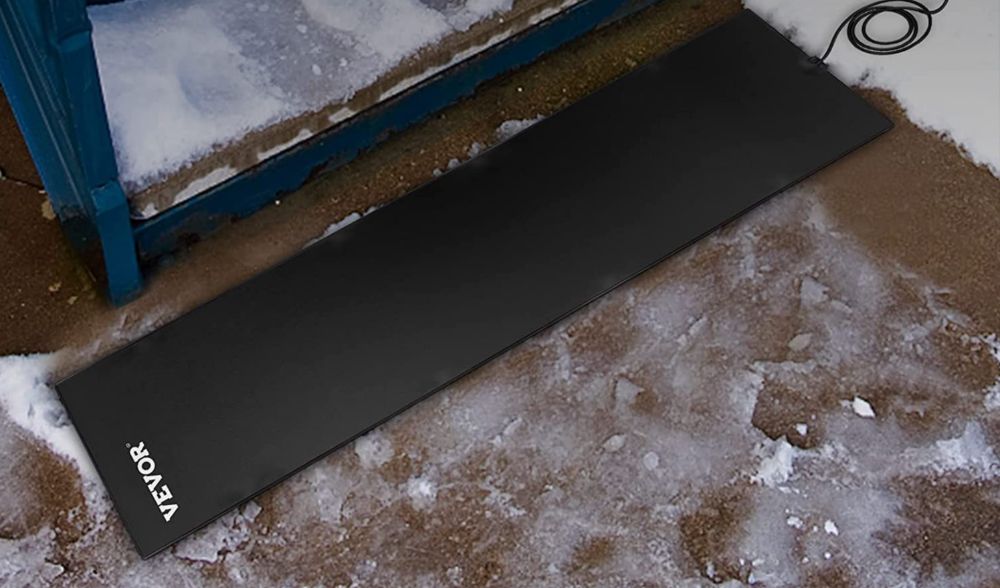
Heated mats might be too costly to use for your entire driveway. But they can be a massive help in keeping outdoor stairs or a walkway snow-free without using salt. They are initially expensive, but over time they’ll pay for themselves.
See the latest price of Heated Mats at Amazon

#10: Alfalfa Meal
Alfalfa meal is an earth-friendly and animal-friendly fertilizer that contains nitrogen. The nitrogen will help melt the ice, and the gritty texture of the alfalfa meal will provide grip. Win-win.
#11: Urea
No, we’re not suggesting you start “harvesting” the waste from your household. Urea is a fertilizer that combines carbon dioxide with ammonia. This product is 46% nitrogen and will melt ice much quicker than alfalfa meal.
There are pros and cons to using urea. On the one hand, urea is much better for the land and your stuff, including the car, concrete, and fabrics.
However, urea is a bad idea if you live near a water supply, such as a pond or lake. There is so much nitrogen in it that if it runs off into the water, it can cause a major algae bloom in the spring. Also, while a little bit of it might help your grass and plants, too much will “burn” them, just like a dog relieving themselves in the same spot every day creates a dead spot on the lawn.
#12: Potassium Acetate
Potassium acetate probably isn’t hanging out in your pantry, nor is it easy to source. However, we did find some on Amazon. The stuff works with a -75 F freeze point, which is why it is often used at airports. Bonus, it is non-corrosive and biodegradable.
However, it isn’t perfect, as it can reduce water’s oxygen levels. Also, it isn’t the cheapest stuff around.
See the latest price of Potassium Acetate at Amazon
Deicers That Don’t Deice
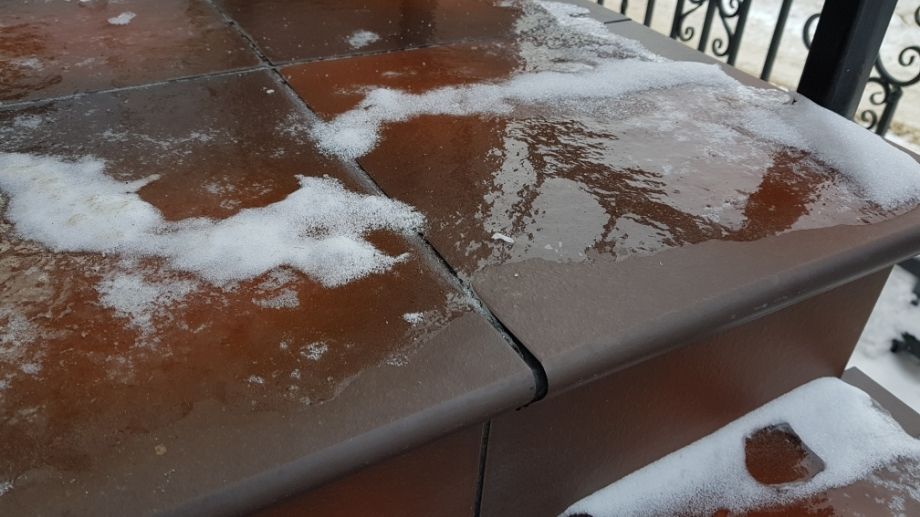
Some popular home remedies don’t actually work to melt ice. Sure, they might help by adding grip to walkways or, perhaps, slightly increasing the melting process if there is sun due to their heat retention. But these home remedies will not actually deice your driveway.
- Ash
- Coffee Grounds
- Sand
Again, the texture these remedies provide will improve grip which makes the ice safer to walk on and means people are less likely to slip.
Also, they will absorb heat if there is sun out, which may slightly speed up the defrosting process. But these are not methods that will get you out of the driveway anytime soon.
Bonus: Ice Melt Science Experiment
If you have kids at home, it can be fun to do a little ice melting science experiment indoors where it is warm and dry.
You will need:
- 8 identical glasses or small bowls
- 8 identical sized ice cubes
- Tablespoon (to measure)
- Hot water
- Coldwater
- Sand
- Baking soda
- Rubbing alcohol
- Sugar
- Salt
If you are missing one of the ingredients, such as rubbing alcohol, no worries. Just remove one ice cube and glass from the experiment.
Step 1: Put an ice cube in each glass
Step 2: Set one glass and its cube to the side. This is your control.
Step 3: Label (name) each remaining glass an ingredient, i.e., “Sand”
Step 4: Add a tablespoon of the ingredient to the corresponding glass
Step 5: Wait and observe
Have the kids note which ice cubes melt from fastest to slowest. When they are done, ask them questions. For example, “Why didn’t the sand help melt the ice cube?” or “If sand doesn’t help melt ice, why do you think they sometimes add it to the road.” (Psst: for traction.)
Conclusion
There are a lot of alternatives to melting ice without using traditional rock salt. There are pros and cons to all the methods: some take a lot longer, others are expensive. However, just to freak your neighbors out, you should definitely give the beetroot juice one a try.

